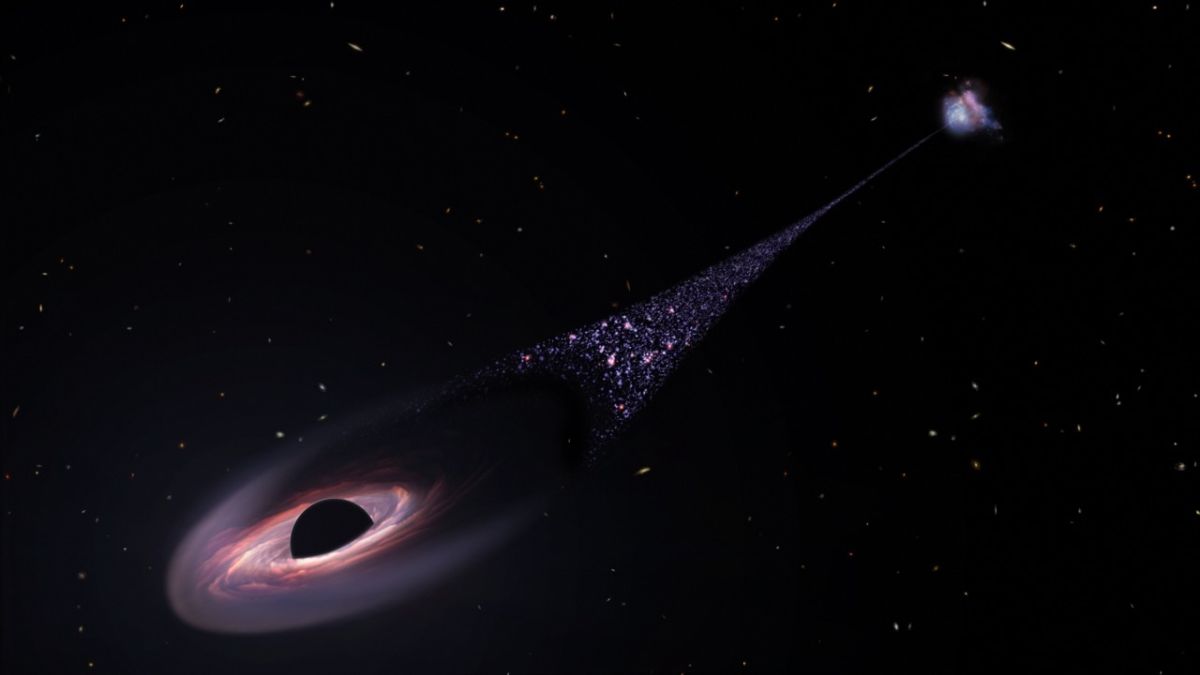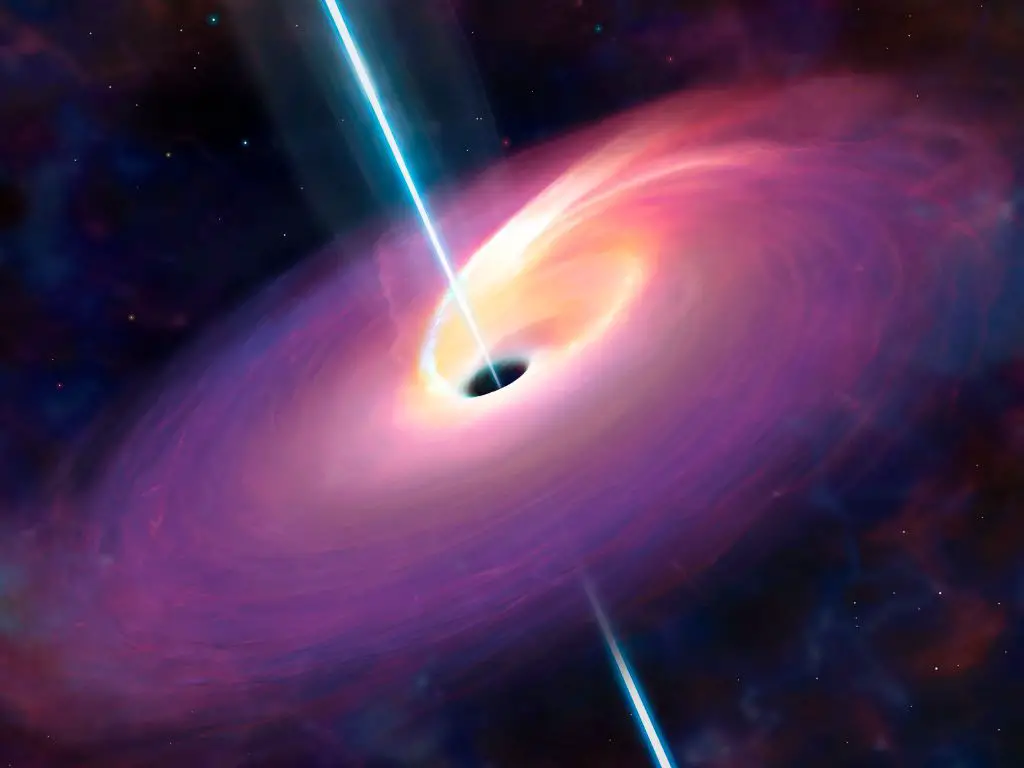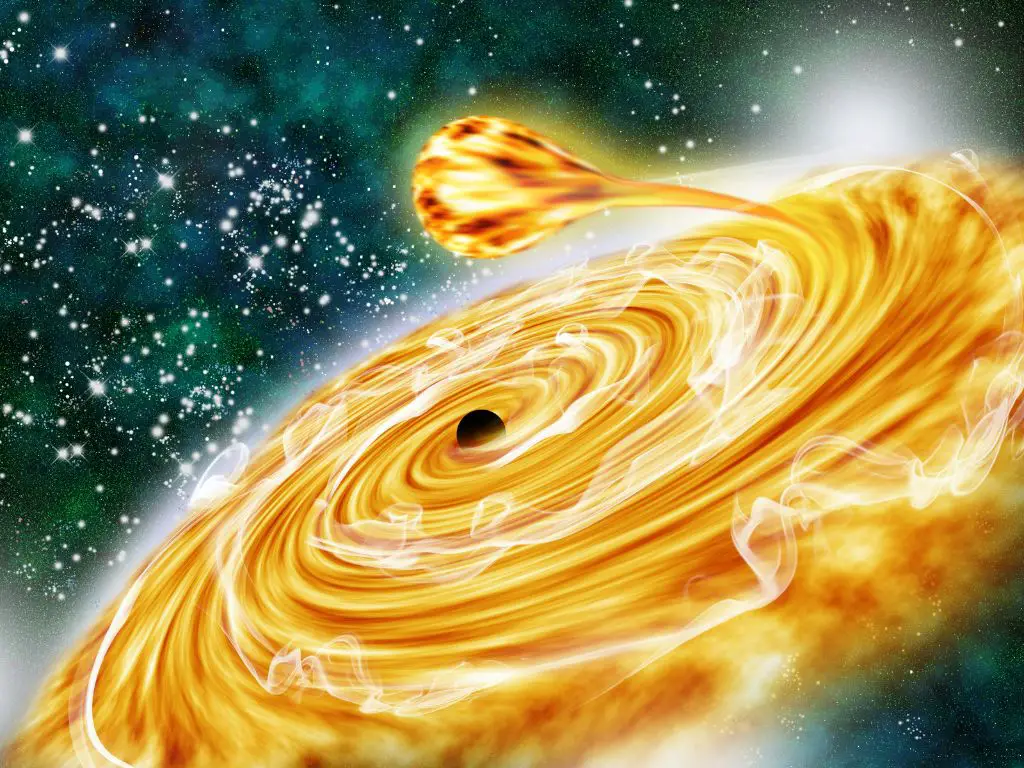Astronomers have witnessed a rare and spectacular sight in the distant universe: a supermassive black hole that is speeding through space, leaving behind a 200,000-light-year-long trail of newborn stars. This is the first time such a phenomenon has been observed, and it reveals new insights into the violent interactions among massive black holes and their host galaxies.
The Story of a Runaway Black Hole
The runaway black hole was discovered by accident by NASA’s Hubble Space Telescope, which was surveying a cluster of galaxies called Abell 2261. The cluster is located about 2.7 billion light-years away from Earth and contains hundreds of galaxies. One of them, called A2261-BCG, caught the attention of astronomers because it has an unusually large and diffuse core, which could be the result of a merger between two or more galaxies.
The astronomers suspected that the core might harbor a supermassive black hole, which is typically found at the center of massive galaxies. Supermassive black holes are millions or billions of times more massive than the sun and can influence the evolution of their host galaxies by consuming gas and dust and emitting powerful jets and radiation.
However, when the astronomers looked for the black hole in A2261-BCG using Hubble’s high-resolution cameras, they could not find it. Instead, they noticed a strange streak of blue light extending from the galaxy. The streak turned out to be a chain of young stars that are only a few million years old. The stars are so hot and bright that they ionize the surrounding gas, creating a glowing trail.
The astronomers realized that they were looking at something extraordinary: a supermassive black hole that was ejected from its host galaxy and is now traveling through intergalactic space at incredible speeds. The black hole is so massive that it weighs as much as 20 million suns and is moving so fast that it would cover the distance between Earth and the moon in just 14 minutes. As it plows through the tenuous gas between galaxies, it compresses it and triggers new star formation along its wake.
But how did the black hole get kicked out of its galaxy in the first place?
The astronomers think that it was the result of a complex game of galactic billiards involving three supermassive black holes. The scenario goes like this: about 50 million years ago, two galaxies merged in A2261-BCG, bringing their central black holes close together. As they orbited each other, they emitted gravitational waves, which are ripples in space-time that carry away energy and angular momentum. This caused the black holes to spiral inward and eventually collide.
However, before they could merge completely, another galaxy entered the scene, carrying with it another supermassive black hole. This third black hole disrupted the delicate balance between the two merging black holes and gave one of them a gravitational kick that sent it flying out of the galaxy at high speed. The ejected black hole then started its journey through intergalactic space, creating a trail of stars behind it.
This scenario is consistent with theoretical predictions and computer simulations of supermassive black hole mergers and ejections. However, it is extremely rare to observe such an event in reality, because it requires precise conditions and timing. Moreover, finding an ejected black hole is challenging because they are usually invisible unless they are actively feeding on gas or emitting jets.
The discovery of the runaway black hole and its starry tail is a remarkable achievement for Hubble, which has been exploring the universe for over 30 years. However, Hubble alone cannot reveal all the secrets of this cosmic monster. The astronomers plan to use other telescopes, such as NASA’s James Webb Space Telescope and Chandra X-ray Observatory, to study the black hole and its trail in more detail and confirm its origin and nature.
The runaway black hole is not only a fascinating object in itself, but also a valuable probe of the history and evolution of its host galaxy and cluster. By tracing its path and measuring its speed and mass, astronomers can learn more about how galaxies form and grow over time, how supermassive black holes interact with each other and their environments, and how gravitational waves shape the fabric of space-time.
The runaway black hole is also a reminder of how dynamic and surprising the universe can be. As Pieter van Dokkum, the lead author of the study, said: “It didn’t look like anything we’ve seen before.”




